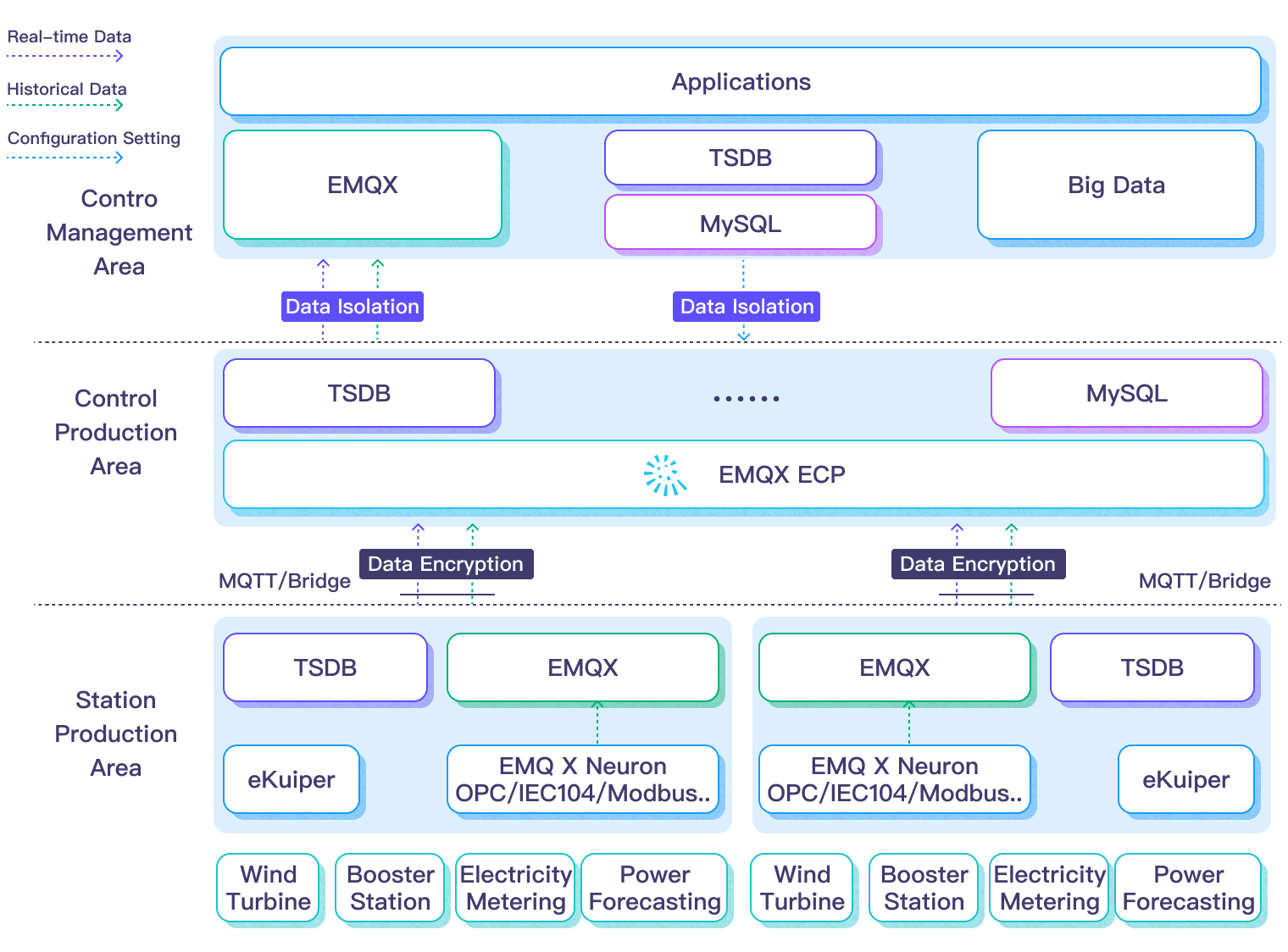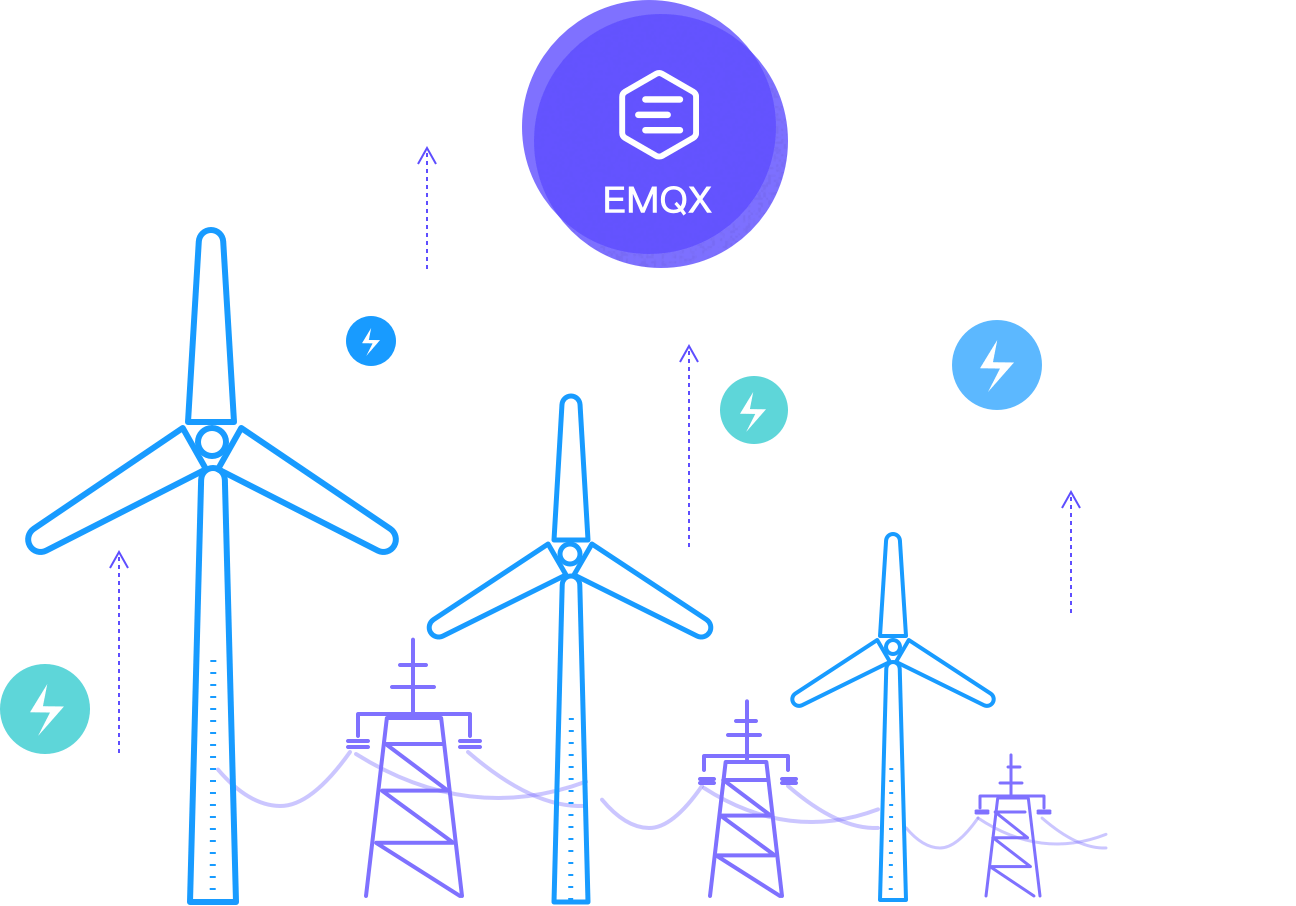Challenge
Low Data Quality
Comprehensive collection and perception of data is the foundation for achieving intelligent management and control of new energy generation and energy storage systems. However, due to limitations such as transmission protocols and communication quality, there are problems with missing data, inaccurate status, lost or inconsistent timestamps, and other issues that make it difficult to ensure the quality of data at the current site.
Difficulties in Maintenance
New energy power plants have the characteristics of being geographically dispersed and harsh environments, and difficult to manage and maintain. With the increasing installation of new energy sources such as wind power, photovoltaic power, and energy storage, power plant scales are gradually expanding, and the workload of operation and maintenance is also continuously increasing.
Rapidly Growing Data
The production and storage of new energy is geographically dispersed, with a wide distribution area and located in remote and harsh operating environments, making standard management and operation difficult. At the same time, with the increasing installation of new energy such as wind power, photovoltaics, and energy storage, the scale of power plants is gradually expanding, and the workload of operation and maintenance is also increasing continuously.
Data and System Silos
There are numerous devices for new energy generation and storage, and various intelligent applications are built independently, which cannot effectively share and exchange data with each other. To explore the value of data and build artificial intelligence applications based on the existing mode, multiple systems need to be connected. However, the databases of different systems are different, the data labels are not unified, and the time is not matched, which requires a lot of human resources and development costs.
Solution
EMQ provides the solution which deploying the Neuron industrial protocol gateway software in new energy generation stations or centralized control data centers to collect power production data primarily accessed through the IEC104 protocol. This is accomplished by adaptively collecting unified real-time data from multiple types of devices and protocols, utilizing the lightweight edge stream processing engine eKuiper to improve data quality through features such as data collection, filtering, completion, time window calculations, and other capabilities. The solution provides powerful edge real-time data collection and analysis capabilities.
To unify access to high-frequency collected massive data, the solution relies on the cloud-native distributed MQTT message server EMQX Enterprise and Edge to Cloud Platform. EMQX ensures real-time, complete, and secure data transmission even in poor network quality or limited transmission bandwidth. It can also collect massive amounts of data based on the cloud-native environment, providing elastic collection support for massive terminals in the field. EMQX supports multi cluster mode that can flexibly scale up without downtime, with a single cluster handling millions of TPS of message concurrency. The data architecture layer has good scalability and stability, even in the event of doubling the data volume in new energy generation stations.The EMQX Edge to Cloud Platform provides a unified management platform for Neuron, eKuiper, and EMQX, enabling centralized management of multiple services distributed in field stations and centralized control production areas, which reduces management and operation costs.

Results
- The new energy generation and storage management system utilizes the EMQ IoT data infrastructure software and IoT protocols for data acquisition and transmission, enabling low-latency real-time reporting of production data and improving overall business response capabilities.
- By connecting, moving, storing, processing, and analyzing real-time data from power plants to the control center, massive data support is obtained. Combined with big data and artificial intelligence applications, it guides power generation optimization control strategies, reduces loss of electricity, improves the power generation efficiency of new energy power plants, realizes intelligent operation and management of new energy.
